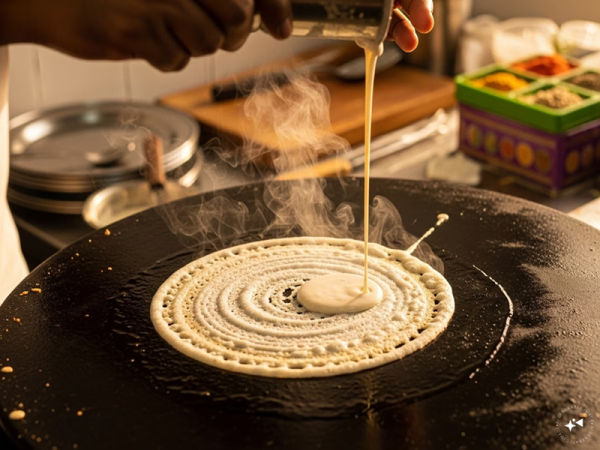

How To Make Crispy Rava Dosa: If you're a fan of South Indian food, the mere mention of Rava Dosa makes your mouth water. While the Rava Dosa you find in restaurants is as thin, crispy, and delicious as it is, it can sometimes be challenging to make it at home. Often, the batter sticks to the pan, the dosa doesn't spread properly, or it ends up soft instead of crispy. But with a few simple tricks, you can make a perfect and crispy Rava Dosa at home every time. Let's learn some mom-specific tips that will make your Rava Dosa restaurant-style crispy and tasty.

Keep these things in mind when making Rava Dosa:
Keep the batter consistent:
Rava Dosa batter is different from regular dosa batter. It doesn't require beating; it's important to make it thin and runny. If the batter becomes too thick, the dosa won't be crispy. The batter should be thin enough to spread on its own when poured onto the pan with a spoon.
Let the Batter Rest
When preparing the batter by mixing semolina, rice flour, and refined flour, let it rest for at least 15–20 minutes. This allows the semolina to swell, resulting in a crispier dosa. Making dosa without resting the batter can cause it to break.
Keep the Pan Temperature Right
The key to making crispy rava dosa is the heat of the pan. If the pan is too hot, the batter will burn immediately, and if it is cold, the dosa will stick. The correct way is to sprinkle water on the pan and immediately hear a sizzling sound. If the pan is at the right temperature, then mix the batter again.
Rava dosa batter always settles to the bottom. Therefore, mix the batter thoroughly with a spoon before pouring it onto the pan. This will ensure that every dosa is uniformly crisp and delicious.
The Right Way to Spread the Batter
Rava dosa is made by pouring the batter onto the pan in a circular motion. Spread the batter all around the pan and gradually fill in the center. This method results in a thin and crispy rava dosa.
Using Oil or Ghee
To make the dosa crisp, apply a little oil or ghee on the edges. For a healthier version, you can also use olive oil. This will make the dosa separate easily from the pan and make it crunchier.
Serve Immediately
Rava dosa is best eaten fresh. Its crispness diminishes after prolonged storage. Serve it hot with coconut chutney or sambar as soon as it comes off the pan.
Making rava dosa isn't difficult, but it just requires a few small precautions. The three most important things are the thin consistency of the batter, the correct temperature of the pan, and the method of pouring the batter.
By following these simple tricks from your mom, you'll be able to make perfect crispy rava dosas at home every time, rivaling restaurant fare in both taste and appearance. The next time you're craving something special for breakfast, be sure to try these tips.
PC Social media